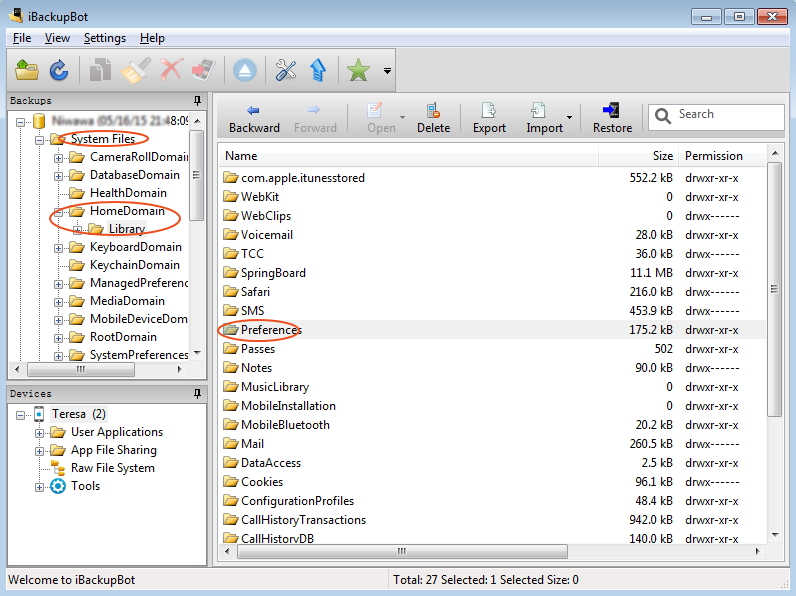
- #RESET RESTRICTIONS PASSCODE USING IBACKUPBOT INSTALL#
- #RESET RESTRICTIONS PASSCODE USING IBACKUPBOT UPDATE#
I’ll let that sit by itself for a moment.įear not! It’s still the Charles jug, we’re not crazy! It’s just had a big polish, and we think it’s more beautiful than ever! We hope you do too. With Charles 4 we’ve also taken the opportunity to spruce up the look of Charles, starting with the familiar, enigmatic and much-loved app icon. Feel the modern IP networking (first published in 1998) flow through you! Then you’ll see IPv6 addresses being used in Charles. IPv6 is also all around you! If you’re lucky enough to have an IPv6 network and ISP you can turn on “Prefer IPv6 addresses when connecting to dual-stack hosts” on the Options tab in the Proxy Settings. You’ll spot HTTP 2 hosts in Charles as they use a different icon-with a lightning bolt! No more! With Charles 4 you can now see HTTP 2 working, and you can use all of your familiar tools Repeat, Breakpoints, and so on. So with Charles 3 you would just have seen HTTP 1.1 everywhere.

Both the client and server need to support HTTP 2, otherwise they will downgrade automatically to HTTP 1.1. It’s sneaky and you might not have noticed. It is also the first paid upgrade in Charles’s long history.

#RESET RESTRICTIONS PASSCODE USING IBACKUPBOT UPDATE#
But for the past 11 months we’ve been hard at work on the biggest upgrade we’ve ever made to Charles!Ĭharles 4 includes an upgrade to the latest and greatest HTTP standard, the latest and greatest IP standard, and the biggest UI update ever for Charles. Since then we’ve been through Charles 2 and Charles 3, both big upgrades. I found it rather refreshing as I didn’t really know whether I still needed any of the ones I had installed!Īt long last, Charles 4 has been released! Charles 1 was released in 2002, nearly 14 years ago. Of course you need to reinstall all the gems you’ve lost. Then you’re gem installing with no sudo 4eva. # Add rbenv to bash so that it loads every time you open a terminalĮcho 'if which rbenv > /dev/null then eval "$(rbenv init -)" fi' > ~/.bash_profile
#RESET RESTRICTIONS PASSCODE USING IBACKUPBOT INSTALL#
Then you can install rbenv, and a new version of ruby in its own little environment just for you, so no sudo: brew install rbenv ruby-build for i in $(gem list | awk '') do gem uninstall -a -I "$i" doneĪfter this, gem list returns nothing, or just the default gems.

Some of the gems are default gems so we can’t uninstall them and you might see error messages for them. But it isn’t.įirst I nuke my gems from orbit (it’s the only way to be sure). But is it a lot of work to change your ways? I thought so. And you’re stuck with an older version of ruby and gem. It’s clear that using sudo to install gems is a bad idea. Setup ruby on macOS without sudo and with the latest version!


 0 kommentar(er)
0 kommentar(er)
